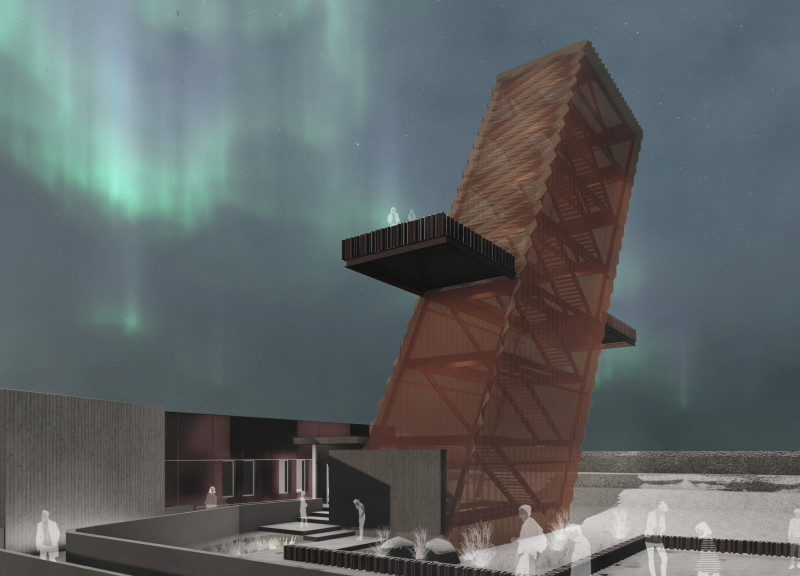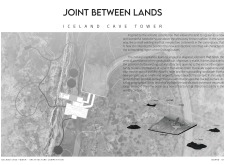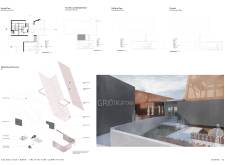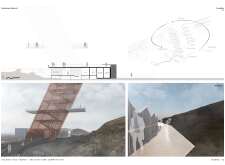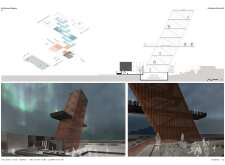5 key facts about this project
The Iceland Cave Tower stands within the distinctive volcanic landscape of the Grjótagjá caves in Iceland. It serves as a space for visitors to observe and engage with the striking geological features of the area. The design concept revolves around the relationship between the structure and the environment, presenting a physical connection to the geological processes that have shaped this region.
Design Concept
The concept of the Iceland Cave Tower draws inspiration from the geological formations found in the area. The structure resembles a welding line, suggesting a connection between two land masses. A diagonal element is key to the design, highlighting the vertical nature of the geological fault. This choice guides the attention of visitors toward the captivating landscape, making the experience of viewing the Mid-Atlantic Ridge more engaging.
Functionality and Visitor Experience
The layout incorporates various functional spaces that enhance the visitor experience. Features include observation platforms, a café, waiting areas, and changing rooms. This arrangement promotes smooth movement throughout the site, allowing people to easily navigate between different areas. Public and private trails lead visitors from parking spaces to the main entrance, ensuring accessibility while respecting the natural contours of the land.
Sustainability Considerations
Sustainability is an important aspect of the design. An engine house, which focuses on managing water and energy, illustrates this commitment. It uses systems like biodigesters and geothermal energy solutions. By integrating these features, the design aims to minimize environmental impact, showcasing a responsible approach to architecture amidst nature.
Materials
The materials selected for the Iceland Cave Tower include basaltic concrete and laminated glass. These are chosen to blend with the surrounding landscape. In addition, permeable corten steel and a recycled aluminum structure support the project’s sustainable goals. The material choices reflect a focus on durability and environmental responsibility.
Large observation platforms provide expansive views of the surrounding geological formations, inviting visitors to appreciate the area's unique beauty.


